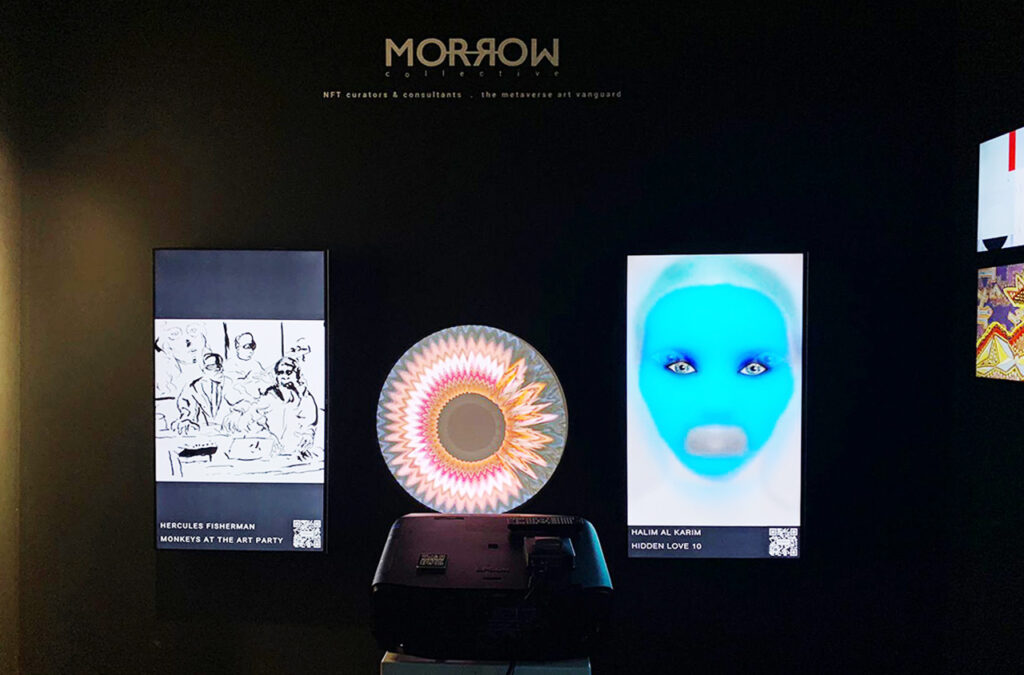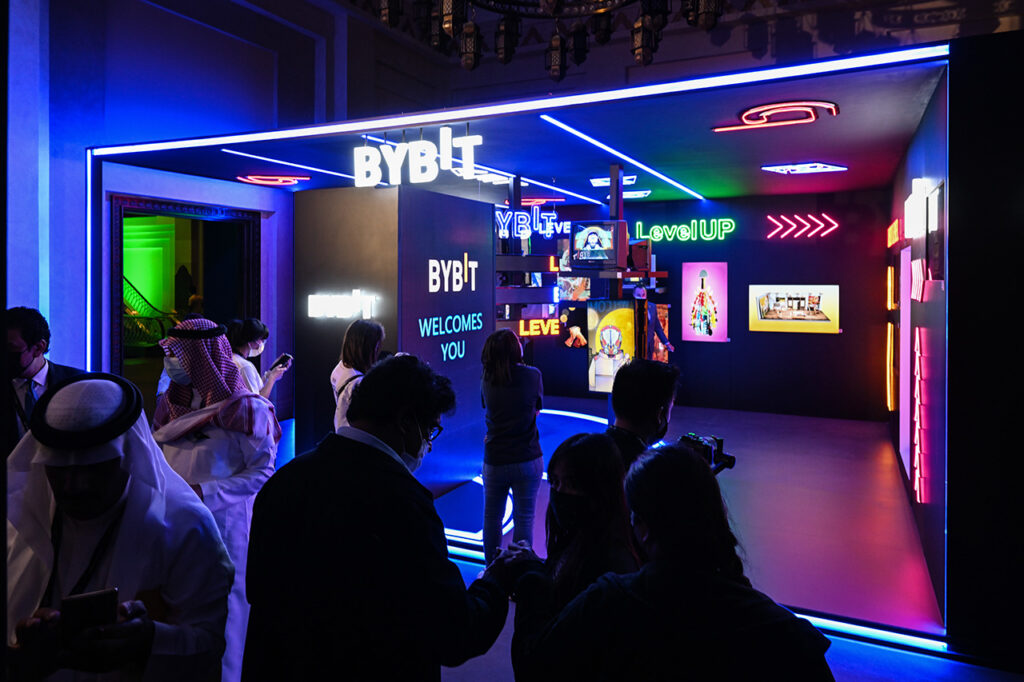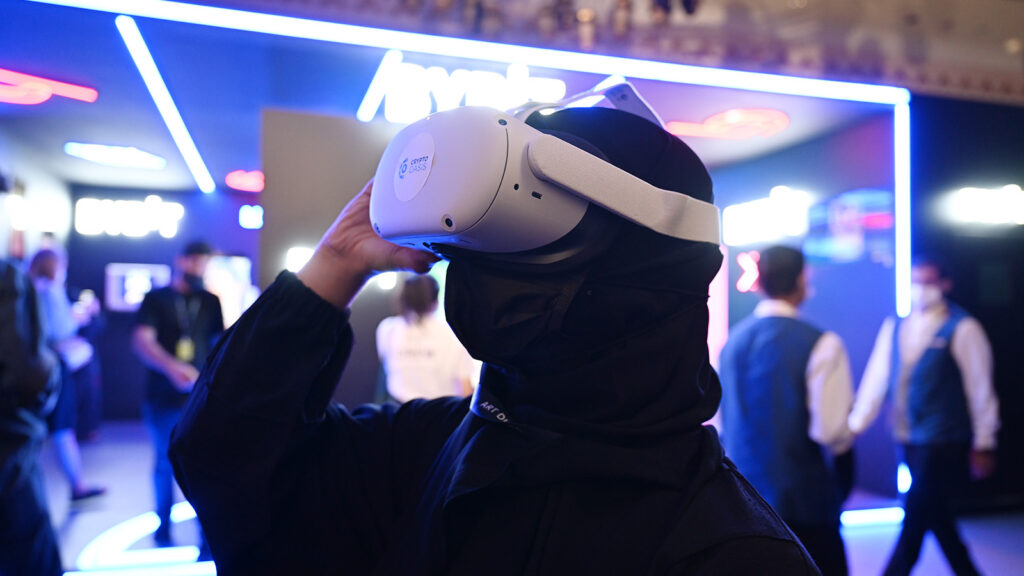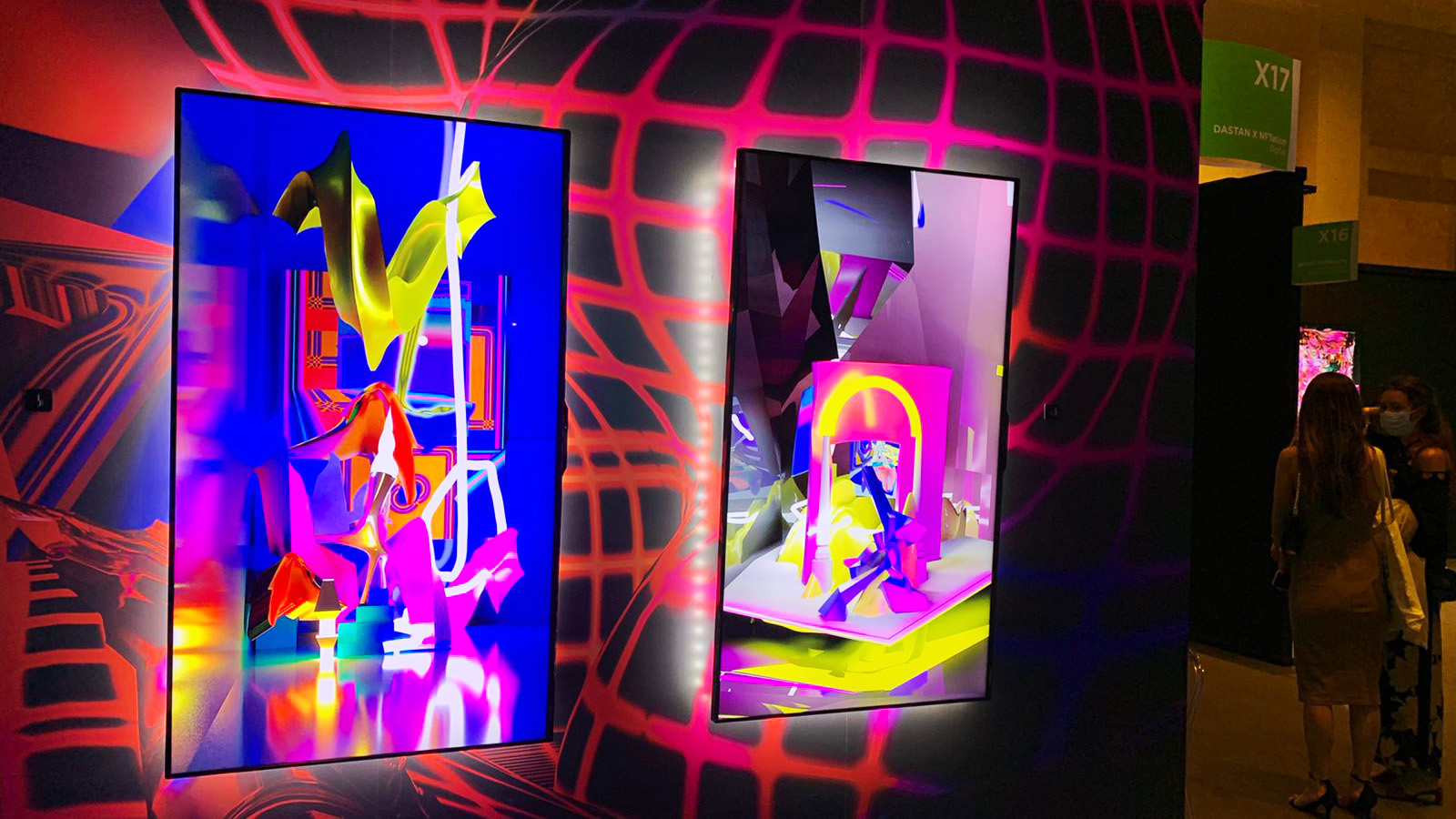The 15th edition of Art Dubai recently took place at Madinat Jumeirah, Dubai from March 11 to 13. After a curtailed version last year, it returned physically with renewed vigor involving more than 100 galleries from 44 countries. What stood out in terms of the fair’s design this year was an attempted focus on digital art, NFTs, and cryptocurrency — both as a platform for sales as well as conversations.
The digital art section at Art Dubai was curated by Chris Fussner of the Tropical Futures Institute, and had 17 participating galleries and online platforms. Notable exhibitions included Istanbul-based Pilevneli Gallery’s Refik Anadol spotlight as well as multi-artist presentations by digital platforms such as Bright Moments DAO, Emergeast, and Cyberbaat.
As art fairs pivot radically to stay competitive post-pandemic and in response to the increasing overlap of art and technology, how do they get the best out of the emerging digital art space, and vice versa? Everyone wants a slice of NFTs today. For art fairs, the digital medium provides an additional layer of curiosity for its traditional art collectors, while fostering a connection with younger visitors. For a regional platform like Art Dubai, it’s also a way of leveling the playing field against global heavy hitters like Art Basel and Frieze. Finally, right now, NFTs are PR gold dust to set off a sharp and heady spike in media coverage.
But to make digital art a part of its proposition in the long run, Art Dubai and similar art fairs must build on three aspects: community, experience, and education.
Be a springboard for the digital arts ecosystem in the region

NFT fine art consultancy MORROW Collective presented a host of UAE-based digital artists at Art Dubai. Image: Marjan Farjam
Supporting local artists and galleries is critical even though geographic focus for digital art sounds paradoxical. At this year’s Art Dubai, Tehran-based Dastaan Gallery, in collaboration with online marketplace NFTation.io. exhibited works by multi-disciplinary artist Yousha Bashir, while UAE-based MORROW Collective presented works by Tayseer Barakat and Amrita Sethi, among others; and online gallery Emergeast exhibited a group of mid-career Middle Eastern and North African artists.
Regions beyond the Western art and tech hubs do not yet have a robust ecosystem to support local galleries and artists working with digital media and technologies. Online platforms often have their own forms of gatekeeping, even if to a lesser extent compared to the traditional galleries. Beyond accessibility, there are linguistic and cultural barriers as well. That is where regional fairs like Art Dubai can support start-ups, galleries, and artists from the region. Going hyperlocal is also a pragmatic move since post-pandemic, global collectors are unlikely to return soon.
Be a platform for innovation in curation and display of digital art

The curation and display of digital art contribute to how viewers experience the works, but as well, how collectors can imagine the pieces in their personal spaces. Image: Cedric Ribeiro, Getty Images for Art Dubai
How to display digital art remains an early-stage work in progress. Dark rooms, neon lights, and off-the-shelf 16-by-9 screens may be the current go-to options, but they are not necessarily the most imaginative or effective ways to showcase digital art. Art fairs should attempt partner with exhibition designers and display manufacturers to explore curatorial innovation, whether it is customized sizes, layouts, brightness, resolutions, or more immersive yet easy-on-the-eye formats.
While art fairs are a sales platform, for an emerging category like digital art, they can score a mutual win-win by making the buying process more experiential. In one of the booths, Marina Federova presented her imagined world of Cosmodreams (2020), an interactive installation where she combined her background in figurative art with her exploration of VR, AR and interactive panels.
Collectors overcome a key barrier to purchase if they can get a better idea of how they can display the art in their personal space, while galleries can benefit by sharing ideas about how to exhibit the works for better outcomes.
Focus on education and the exchange of ideas

Capitalizing on the curiosity of mainstream audiences, art fairs can plan programs and talks that further educate the public on digital art, in turn expanding access. Image: Cedric Ribeiro, Getty Images for Art Dubai
Both the earlier Art Basel Miami and Frieze LA appeared to be overdosed on social events and managed to co-opt NFT evangelizers who would otherwise be critical of the trappings of the mainstream art world. But they revealed that no matter how digitally native the crypto community is, there will always be the human desire to meet and engage IRL. They also showed the latent curiosity among wider audiences to experience digital art.
Art Dubai made a content-driven pitch with a discursive talks program, which covered metaverses, web 3.0, cryptocurrencies, gaming, and digital ownership. An online program livestream is a must since the aim should be to involve leading experts, while providing access to remote viewers even if they can only participate virtually.
Dubai aims to be both a leading global cultural destination as well as a financial and cryptocurrency hub. New immersive cultural experiences like the Theatre of Digital Art, Infinity des Lumières and most recently, the Museum of the Future have added to those placemaking efforts. Art Dubai has the potential to annually complement that agenda, while supporting galleries and artists from the extended region.



